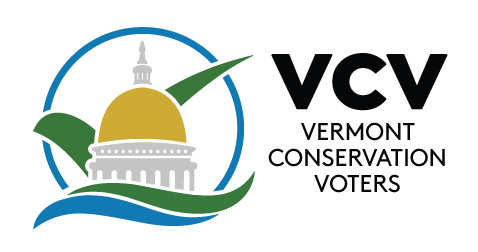Late yesterday, Vermont Gov. Phil Scott signed into law a bill (S.55) that he had previously blocked as both governor and lieutenant governor in its earlier iterations. The law is designed to better protect children from toxic chemicals in products that are made specifically for kids.
The new law makes important changes to the Chemicals of High Concern to Children (Act 188) program. Act 188 was signed by Gov. Peter Shumlin in 2014 at the headquarters of Seventh Generation in Burlington. The law signed yesterday will make more information available to parents and other consumers about whether a children’s product contains a known toxic chemical. It will also streamline the process by which the Commissioner of Health, after consulting with a diverse stakeholder group, can move to ban or otherwise regulate the use of harmful chemicals in children’s products.
The legislation has had the support of Vermont firefighters, business groups, educators, labor organizations, public health and children’s advocates, and environmental groups for years, but has been unable to make it across the finish line until now.
“It should not have taken five legislative sessions to better protect children from toxic chemicals in their toys, clothing or other items,” said Paul Burns, executive director of the Vermont Public Interest Research Group. “I’m grateful to all of the parents and legislative champions who never gave up fighting for this despite the entrenched opposition of chemical manufacturers and industry lobbyists.” He singled out Sen. Ginny Lyons (D-Chittenden), Chair of the Senate Health & Welfare Committee, for her determined leadership on the issue.
The idea for removing the bureaucratic red tape that made it unnecessarily difficult for the Commissioner of Health to regulate toxic threats to children was first proposed as an amendment to a larger health care bill in 2015. The amendment came down to a 15-15 tie in the Senate, which was broken by then-Lt. Gov. Phil Scott, who sided with industry in opposing the measure.
In 2018, the concept landed on Gov. Scott’s desk as a stand-alone bill (S.103), which he vetoed, once again disappointing advocates for children’s health. The Senate overrode the veto, but in the House the override fell four votes short.
Lauren Hierl, executive director of Vermont Conservation Voters added, “It’s a shame that pressure from the chemical industry and their allies stalled progress on this bill for many years, including convincing Gov. Scott to veto very similar legislation last year. The years of delay in enacting this bill resulted in Vermont’s children being unnecessarily exposed to toxic chemicals in their toys, teethers, baby bottles, and more. We’re pleased that with strong leadership from legislative champions, this important program can finally be implemented as intended to protect the health of our children.”
In his veto message to legislators last year, Gov. Scott said that, “We cannot afford to give manufacturers another reason to look elsewhere for their location or expansion needs.”
He cited specifically a section of the bill that would have made it possible for Vermont’s Health Commissioner to initiate rulemaking against a dangerous children’s product without first being instructed to do so by a stakeholder group that includes industry lobbyists. That increased authority for the Health Commissioner is once again a fundamental feature of the bill that the governor decided to sign this year.
Overwhelming legislative support for the bill may have contributed to the governor’s change of heart. The Senate passed S.55 on a 25-5 vote, while the House vote was 137-4.
“It never made sense that a small group of stakeholders, including industry lobbyists who never supported the law to begin with, could block the Health Commissioner from even proposing a rule to protect children from a toxic threat,” said Burns. “We’re glad the governor finally rejected the industry’s Chicken Little arguments in this case.”
In addition to making it easier for the Health Department to safeguard children, S.55 formalizes the establishment of an interagency committee to improve coordination among the numerous state agencies that regulate and collect data on toxic and hazardous substances. This interagency group was established by executive order in 2017 after an earlier attempt to pass the law fell short. The language in the new law more closely mirrors the executive order, thereby addressing some of the governor’s concerns from last year.
With the data collection improvements signed into law yesterday, Vermont will have one of the most comprehensive databases in the country linking individual children’s products with specific chemicals of concern. However, there is much more work to be done to make the information more easily accessible to consumers.
In terms of eliminating the toxic threats, other states have begun to take even more aggressive action in the years since improvements to Vermont’s Act 188 were first proposed. Legislators in both the Senate and House expressed an interest in considering these steps when they return to Montpelier next year.
“Today is a day to celebrate, but as long as children or adults are needlessly exposed to chemicals that can harm them, we’ll be back,” said Burns.
# # #
